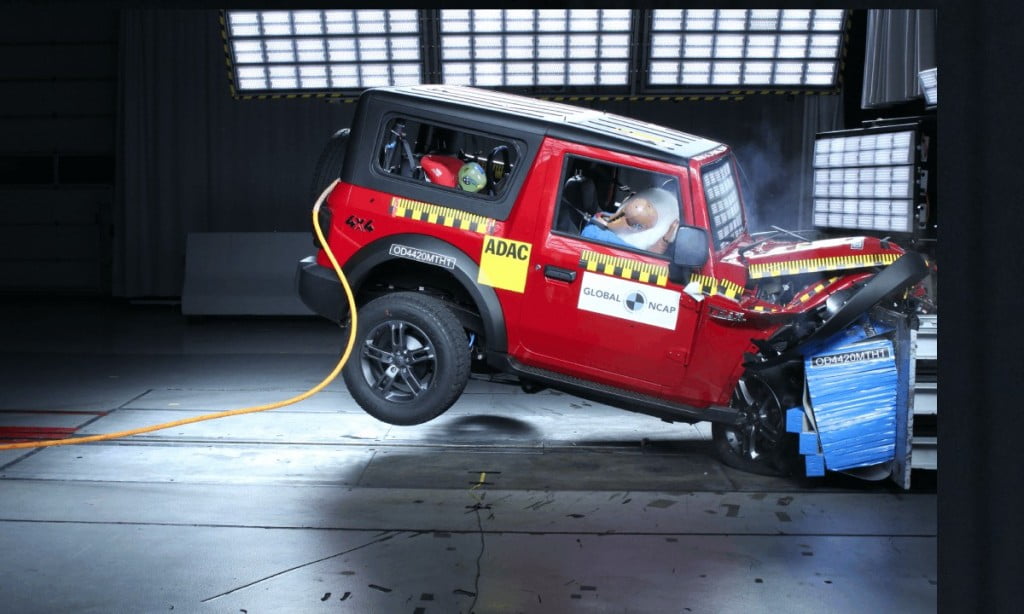Automobile Safety is something that the India Government, carmakers and customers have started taking seriously for the past 7-odd years. After the Tata Nexon became the country’s only 5-star safety-rated vehicle at the Global NCAP. Carmakers have started manufacturing safer cars for India and the customers have grown conscious of owning a safer car. While buying a new car, the customers are taking into consideration the safety rating and equipment of the car as well. This is a positive sign for the industry in general. Because according to some reports, a vast majority of road accidents around the globe could be avoided through modern safety techniques and features. Also, in case of unavoidable accidents, the damage to the occupants, pedestrian and the vehicle could be minimized due to modern safety equipment. What are the factors that have contributed to these changes in the mindset of people and what are the main safety features that every modern car must come with?
Also read: Renault Triber secures a 4-star safety rating at the Global NCAP!

Global NCAP Safety Ratings
The initiative “Safer Cars for India” ensures that more and more cars for the Indian market are tested at the Global NCAP. This will monitor the safety equipment that the carmakers offer in their products. Additionally, the Global NCAP tests the base variant of every product so that the customers know the safety capabilities of the car irrespective of the trim. In the future, the Global NCAP has announced that it will test the vehicles on even more parameters and make the tests stricter by introducing new tests. The vehicles with a lot of safety equipment and great construction would be able to secure higher ratings and points. This is only a good thing because the safety of the people should be the priority for all the carmakers in the first place. Swedish carmaker, Volvo, had electronically limited the top speed of all its products to 180 kmph which is a welcome decision. We want more and more safety-conscious carmakers.
Also read: How do cars get Global NCAP Safety Ratings?
Role of the Government
Governments and Policies also play a crucial role in determining the safety standards of vehicles in a country. Only the Governments have the power to change or create new policies and force implementation of the same in a country. The Indian Government has been very active in this area and has introduced a series of such changes and policies to ensure safety on Indian roads. Some of the highlights of such policy changes are the introduction of parking sensors and seatbelt reminders on all cars manufactured for the Indian market. Any car without these features will be deemed illegal. Recently, a new rule ensures that all the cars manufactured in India must have at least two airbags as standard across all variants. This would ensure that the damage and injuries sustained during an unfortunate event could be minimized.
Also read: Government Initiatives to improve safety and efficiency on Indian roads!
Compared to a few years ago, there are a multitude of new safety features that a lot of new cars come with and we expect that these should be standard or at least offered as optional.
ABS with EBD
Anti-Lock Braking System and Electric Brake-Force Distribution are safety features that come as standard on almost all cars today. In the event of sudden braking, ABS would ensure that the wheels of the car don’t get locked which could lead to slippage. That is what happens in a lot of scenarios where the wheels are locked and the car gets out of control. The braking effectiveness is severely impacted in such cases. Similarly, the EBD makes sure that the wheel which is spinning excessively due to loss of traction could be stopped by selective braking. These factors enhance the braking capabilities of a car tremendously.
Also read: What is E20 Fuel and how India aims to achieve 20% Ethanol blend by 2025?
ESP and Brake Assist
Electronic Stability Program senses the loss of traction from the steering input and wheel output and helps the application of the brakes automatically. Sometimes, it can also reduce the engine power output so that the driver can gain back control of the car. Brake Assist does something similar but directly to the brakes. Sensing a sudden force on the brake pedal in case of emergencies by the driver, it ensures that the pedal is pressed completely. It is common knowledge that during such events, the driver doesn’t have enough time or reflexes to ensure the maximum force on the brake pedal affecting the effectiveness of the brakes.
Also read: 6 Most Relevant Connected Car Tech Features in Modern Cars!
Blind Spot Monitoring System
The problem of the blind spot on the left side just behind the car can cause some seriously challenging situations. There are a lot of cars that come with the lane change camera which feeds the live video to the screen of the car so that the driver is always aware of his/her surroundings. It is an absolutely practical and relatively simple solution for a big problem.
Also read: What are Intercoolers – Types and Functions!
As automobile journalists and enthusiasts, we could voice our opinions and hope that we keep moving strongly in the direction that we are currently walking in. The current customers are aware of the importance of safety equipment in vehicles. As long as the customers demand, the carmakers will have no options but to keep including newer technologies to enhance the safety of passengers and vehicles. Also, like with every new technology, it will eventually trickle down to all segments of cars and the price would soon cease to be an issue as well.
Also read: What is Air Suspension and what are Soft and Stiff Springs?


